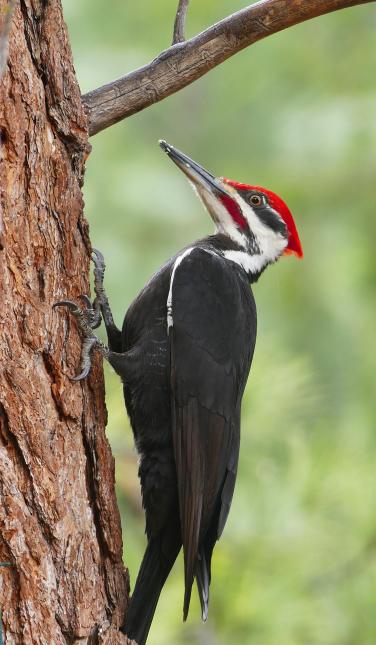Unveiling the Keys of Woodpeckers: Behavior, Habitat, and A Lot More
Woodpeckers, with their special actions and specialized adjustments, have long fascinated scientists and nature enthusiasts alike. These remarkable birds have a variety of fascinating tricks that dropped light on their survival strategies, environment preferences, and elaborate interaction techniques. By revealing the enigmas surrounding woodpeckers' behavior and environment choices, a much deeper understanding of these avian wonders arises, supplying a glance into their interesting world. What makes these birds truly extraordinary, and just how do they browse their atmosphere with such accuracy and ability? Allow's check out the exciting world of woodpeckers and unravel the enigmatic information that make them such intriguing topics of study.
Woodpecker Behavior Insights
In taking a look at woodpecker behavior, a fascinating screen of specialized skills and adjustments arises, shedding light on their exceptional eco-friendly niche. Woodpeckers, recognized for their distinct drumming on trees, have a variety of behavior attributes that contribute to their survival and success in their setting.
In addition, woodpeckers display a distinct feeding actions defined by their capability to extract pests from tree bark using their specialized beaks. Their lengthy, barbed tongues aid in catching prey, while their solid neck muscle mass supply stability and accuracy during pecking motions. This feeding technique enables woodpeckers to gain access to hidden insect larvae and remove them with exceptional performance.
Environment Preferences and Choice
What variables affect the habitat choices and option of woodpeckers? One essential factor influencing woodpecker habitat option is the accessibility of ideal nesting sites. Woodpeckers typically favor forests with a mix of mature trees that supply ample chances for cavity excavation.
Furthermore, woodpeckers reveal a preference for habitats with a bountiful supply of food resources. They are mainly insectivorous, feeding on beetles, ants, larvae, and other bugs located in decaying timber or tree bark. Woodpeckers often tend to favor woody areas with a varied insect population to meet their dietary requirements.
Moreover, the visibility of dead or rotting trees is one more essential consider woodpecker habitat choice. These trees not only provide food resources but also provide suitable substrate for dental caries excavation. Dead trees are essential for the upkeep of healthy and balanced woodpecker populaces, as they play my website a vital role in the woodpeckers' life cycle and community characteristics.
Feeding Habits and Diet Plan Make-up
Woodpeckers show a specialized feeding actions concentrated on foraging for pests within various environments. In addition to pests, woodpeckers likewise eat tree sap, fruits, nuts, and seeds, adding variety to their diet depending on the season and schedule of food sources.
The foraging methods of woodpeckers are well-adapted to their arboreal way of life. Woodpeckers play an important more information function in keeping the wellness of forests by regulating insect populations and helping in the disintegration of wood.
Drumming Seems and Interaction
Making use of quick drumming sounds on various surface areas, woodpeckers use a distinct kind of communication to signify area borders and draw in mates. This drumming habits is not just a method of communication but likewise acts as a way for woodpeckers read this post here to establish their existence within a specific area. The intensity, speed, and pattern of the drumming can share essential info to other woodpeckers around.
Woodpeckers use drumming noises to introduce their visibility in a region and to caution off prospective trespassers. The loud and repetitive nature of the drumming acts as a clear signal to various other woodpeckers that the location is currently declared. This helps in minimizing problems and decreasing physical battles between individuals.

Survival Adaptations and Specialized Anatomy

Conclusion
To conclude, woodpeckers show one-of-a-kind actions, such as drumming sounds for interaction, and have specialized makeup for survival in their chosen environments. Their feeding routines and diet make-up additionally demonstrate their flexibility to numerous atmospheres. By recognizing these elements of woodpeckers, scientists and preservationists can better shield and preserve these remarkable birds and their ecological communities.